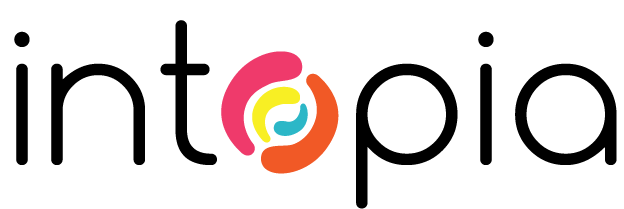The Australian Government’s Digital Transformation Agency (DTA) released version 2.0 of its Digital Service Standard (the Standard) at the end of 2023, nearly 7 years after the first version was developed. In this article, I’ll explore what has changed and what improvements might apply to the accessibility requirements, having been one of the key architects of version 1.0 of the Standard when I was working at the DTA.
First, the number of criteria has been reduced from 13 to 10. This is good as it reduces duplication and makes the Standard easier to understand and follow. The criteria are now, in summary:
- Have clear intent
- Know your user
- Leave no one behind
- Connect services
- Build trust in design
- Don’t reinvent the wheel
- Do no harm
- Innovate with purpose
- Monitor your service
- Keep it relevant
Key changes in version 2 that relate to or impact accessibility and inclusion.
- Criterion 9 – ‘Make it accessible’ in version 1 has been replaced with ‘Criterion 3 – Leave no one behind’ in version 2.
- Criterion 3 – ‘Leave no one behind’ has a broader emphasis on human diversity, including needs arising from cultural, language, access and socioeconomic elements.
- The references to the Web Content Accessibility Guidelines (WCAG) don’t mention a version or conformance level.
- The Standard now covers ‘staff-facing’ digital services, not just ‘public facing’ services.
Criterion 3 ‘Leave no one behind’ is now the key criterion now dealing with accessibility and requires:
“A deliberate effort to challenge assumptions and design for marginalised users will ensure your service is inclusive, accessible and useful for all.”
Criterion 3 explicitly states that to meet the criterion, agencies need to (quote):
- Understand the diversity of their users
- Comply with legislation and standards, including the:
- Disability Discrimination Act (1992) (DDA)
- Latest version Web Content Accessibility Guidelines (WCAG)
- Australian Government Style Manual
- Implement a feedback mechanism
With the Standard now removing reference to the version of WCAG, agencies must apply the latest version. This future-proofs the Standard for new versions of WCAG, which is a positive and something that was difficult in version 1.0. It also makes clear to agencies that have been conforming with WCAG 2.1, or the few that are still stuck on WCAG 2.0, that WCAG 2.2 is the version they must implement.
For agencies getting up to speed on WCAG 2.2, check out the updates to WCAG 2.2 by downloading our highly popular WCAG 2.2 map or by watching our WCAG 2.2 at a glance videos on Intopia’s Youtube channel.
Removing the reference to a conformance level, which was previously Level AA, may be cause for celebration or concern. Agencies might take the easy option, and only conform with Level A which would be a step back for accessibility. However, it may also encourage organisations that Level AA is not the minimum and get them to consider relevant parts of Level AAA. Time will tell if this is a positive or negative change.
The reference to the Disability Discrimination Act makes clear the legal requirements of agencies to ensure people with disability are not discriminated against. Intopia is working with the Australian Human Rights Commission to update their note last published in 2014, which has specific advice on meeting the requirements of the Disability Discrimination Act for digital services. This will be an important document to read and consider in the future alongside the Standard.
In addition to this, the phrasing of the second point (bold added) “comply with legislation and standards, including the…” also leaves it open for other legislation relevant to “leave no one behind”, such as the Racial Discrimination Act 1975 to be a part of this criterion.
It is also pleasing to see the Style Manual referenced as it integrates accessibility into much of its guidance.
The final requirement to meet Criterion 3 is to implement a feedback mechanism means that agencies need to specifically collect feedback from people with disability when digital services fail for them.
It’s good to see the scope of the Standard now includes ‘staff-facing digital services’ in its scope. The original version only covered ‘public facing’ digital services. This is a great change as it now helps address the needs of public servants with disability or impairment. However, it is disappointing that existing staff services are exempted, though recommended to comply. The scope has also been expanded to include ‘Other digital platforms’ which should cover self-service and check-in kiosks.
Some other criteria also address accessibility:
- Criterion 2 – ‘Know your user’ requires inclusive user research.
- Criterion 6 – ‘Don’t reinvent the wheel’ talks about procurement. It references the BuyICT guidance with its explicit accessibility requirement and reference to the Australian Standard for Accessibility requirements for ICT products and services (AS EN 301 549:2020).
- Criterion 8 – ‘Innovate with purpose’ requires a consideration of accessibility and usability when adopting new technologies to ensure no one is left behind. This includes important conversations such as data bias when considering artificial intelligence, as raised in the Human Rights and Technology report.
The Digital Experience Toolkit that the Standard is a part of also includes advice on finding people for user research and advises including the right people such as those with disability or who use assistive technology. Intopia’s Equitable Design team can assist with this.
Digital services are not expected to conform with version 2.0 immediately. A 7-month transition period has been provided for services currently under development (those due to be released from July 2024) to apply the new Standard. Existing services have until July 2025 to make sure they conform. During this phase-in period the DTA will be developing a reporting framework for new and existing services to report on their compliance.
So, what is the conclusion? Yes, Version 2 of the Standard is an improvement over Version 1 from a digital accessibility perspective, especially when the other components of the Digital Experience Toolkit are taken into account.
If you’d like to learn more about measuring your level of accessibility or embedding accessibility standards into your digital processes, get in contact with our knowledgeable team.

